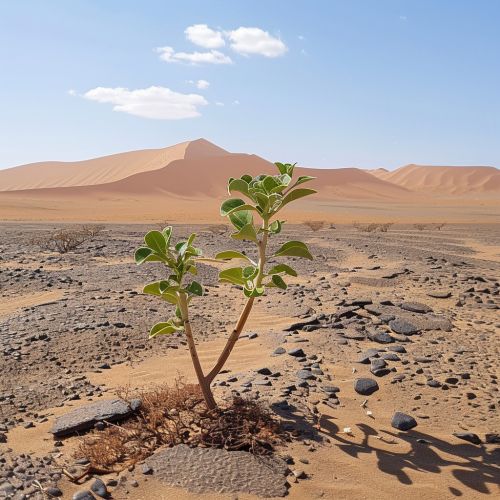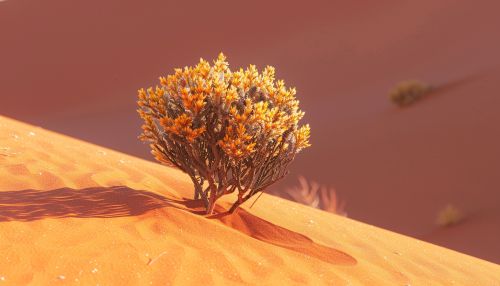Endemic Species
Introduction
Endemic species are organisms that are native to a specific geographic location and are not found naturally anywhere else. These species can be plants, animals, fungi, or microorganisms that have evolved unique characteristics to adapt to their specific environment. The concept of endemism is crucial in the fields of biogeography, conservation biology, and ecology as it helps in understanding the distribution of species and the factors that influence their survival and evolution.
Types of Endemism
Endemism can be classified into several types based on the geographic scale and the ecological factors involved:
Paleoendemism
Paleoendemism refers to species that were once widespread but are now restricted to a smaller area. These species often survive in isolated refugia where the conditions have remained stable over long periods. An example of a paleoendemic species is the Ginkgo biloba, which is now confined to small areas in China but was once widespread across the globe.
Neoendemism
Neoendemism refers to species that have recently evolved and are found only in a specific location. These species are often the result of adaptive radiation, where a single ancestral species diversifies into multiple new species to exploit different ecological niches. The Galápagos finches are a classic example of neoendemism.
Microendemism
Microendemism refers to species that are restricted to very small geographic areas, often due to highly specific habitat requirements. These species are particularly vulnerable to environmental changes and human activities. An example of a microendemic species is the Devils Hole pupfish, which is found only in a single water-filled cavern in Nevada, USA.
Factors Influencing Endemism
Several factors contribute to the development and maintenance of endemic species:
Geographic Isolation
Geographic isolation is one of the primary factors leading to endemism. Physical barriers such as mountains, rivers, and oceans can prevent species from dispersing to other areas, leading to the evolution of unique species in isolated regions. The Hawaiian Islands are a prime example of geographic isolation leading to a high level of endemism.
Ecological Niches
Unique ecological niches can also promote endemism. When a species adapts to a specific set of environmental conditions, it can become highly specialized and unable to survive outside its native habitat. The Venus flytrap is an example of a plant that has evolved to thrive in the nutrient-poor soils of the Carolinas in the United States.
Evolutionary History
The evolutionary history of a region can influence the level of endemism. Areas with a long and stable geological history are more likely to have high levels of endemism because they provide stable conditions for species to evolve and diversify. The Cape Floristic Region in South Africa is known for its high level of plant endemism due to its stable climate and diverse habitats.
Human Activities
Human activities such as habitat destruction, pollution, and the introduction of invasive species can significantly impact endemic species. These species are often highly specialized and unable to adapt to rapid changes, making them particularly vulnerable to extinction. Conservation efforts are crucial to protect these unique species and their habitats.
Conservation of Endemic Species
The conservation of endemic species is vital for maintaining biodiversity and ecological balance. Several strategies are employed to protect these species:
Protected Areas
Establishing protected areas such as national parks and wildlife reserves is one of the most effective ways to conserve endemic species. These areas provide a safe habitat where species can thrive without the threat of human activities. The Galápagos National Park is an example of a protected area that helps preserve the unique species of the Galápagos Islands.
Ex Situ Conservation
Ex situ conservation involves protecting species outside their natural habitat. This can include botanical gardens, zoos, and seed banks. These facilities play a crucial role in preserving genetic diversity and can serve as a backup in case of habitat loss. The Millennium Seed Bank Partnership is an example of an ex situ conservation effort aimed at preserving plant species.
Legislation and Policy
Implementing and enforcing legislation and policies that protect endemic species and their habitats is essential for their conservation. International agreements such as the Convention on Biological Diversity (CBD) and national laws like the Endangered Species Act in the United States provide a legal framework for protecting these species.
Community Involvement
Engaging local communities in conservation efforts is crucial for the success of any conservation program. Educating and involving people who live near endemic species' habitats can lead to more sustainable and effective conservation practices. Community-based conservation programs in Madagascar have been successful in protecting the island's unique biodiversity.
Examples of Endemic Species
Flora
Welwitschia mirabilis


Welwitschia mirabilis is a unique plant species endemic to the Namib Desert in Namibia and Angola. It is known for its unusual appearance, with only two leaves that grow continuously throughout its life, which can span over a thousand years. This plant is adapted to the arid conditions of the desert and obtains moisture from fog.
Rafflesia arnoldii
Rafflesia arnoldii, also known as the corpse flower, is endemic to the rainforests of Sumatra and Borneo. It is famous for producing the largest individual flower in the world, which can reach up to one meter in diameter. The flower emits a strong odor of decaying flesh to attract pollinators such as carrion flies.
Fauna
Aye-aye
The aye-aye (Daubentonia madagascariensis) is a nocturnal primate endemic to Madagascar. It is the world's largest nocturnal primate and has several unique adaptations, including a long middle finger used to extract insects from tree bark. The aye-aye is considered a symbol of Madagascar's unique biodiversity.
Kiwi
The kiwi is a flightless bird endemic to New Zealand. There are five recognized species of kiwi, all of which are characterized by their small size, long beak, and nocturnal habits. Kiwis are highly adapted to their forest habitats and play a crucial role in the ecosystem as seed dispersers and insect predators.
Importance of Endemic Species
Endemic species are important for several reasons:
Biodiversity
Endemic species contribute to global biodiversity by adding unique genetic material and evolutionary adaptations. They often have specialized roles in their ecosystems, such as pollinators, seed dispersers, or predators, which help maintain ecological balance.
Scientific Research
Endemic species provide valuable opportunities for scientific research. Studying these species can offer insights into evolutionary processes, adaptation mechanisms, and ecological interactions. The unique characteristics of endemic species can also lead to discoveries with potential applications in medicine, agriculture, and biotechnology.
Cultural Significance
Many endemic species hold cultural significance for local communities. They may be featured in folklore, traditional medicine, or as symbols of national identity. Protecting these species helps preserve cultural heritage and promotes a sense of pride and stewardship among local populations.
Threats to Endemic Species
Endemic species face several threats that can lead to their decline or extinction:
Habitat Loss
Habitat loss due to deforestation, urbanization, and agricultural expansion is one of the most significant threats to endemic species. These species often have limited ranges and specific habitat requirements, making them particularly vulnerable to habitat destruction.
Climate Change
Climate change can alter the environmental conditions that endemic species rely on, such as temperature, precipitation, and sea levels. These changes can disrupt the delicate balance of their ecosystems and lead to population declines or extinctions.
Invasive Species
The introduction of invasive species can have devastating effects on endemic species. Invasive species can outcompete, prey on, or introduce diseases to endemic species, leading to their decline. The introduction of the brown tree snake to Guam has led to the decline of several endemic bird species.
Pollution
Pollution from industrial activities, agriculture, and urbanization can degrade the habitats of endemic species. Contaminants such as pesticides, heavy metals, and plastic waste can have harmful effects on the health and reproductive success of these species.
Case Studies
Madagascar
Madagascar is one of the world's biodiversity hotspots, with a high level of endemism. Approximately 90% of the island's plant and animal species are found nowhere else on Earth. However, Madagascar's unique biodiversity is under threat from deforestation, habitat fragmentation, and illegal wildlife trade. Conservation efforts, including the establishment of protected areas and community-based conservation programs, are crucial for preserving Madagascar's endemic species.
The Galápagos Islands
The Galápagos Islands are renowned for their unique flora and fauna, which played a crucial role in Charles Darwin's development of the theory of evolution by natural selection. The islands are home to several endemic species, including the Galápagos tortoise, marine iguana, and flightless cormorant. Conservation challenges in the Galápagos include invasive species, overfishing, and tourism impacts. The Galápagos National Park and Marine Reserve play a vital role in protecting the islands' biodiversity.
The Cape Floristic Region
The Cape Floristic Region in South Africa is one of the world's richest areas for plant diversity and endemism. It is home to over 9,000 plant species, 70% of which are endemic. The region faces threats from urbanization, agriculture, and invasive species. Conservation efforts include habitat restoration, invasive species management, and the establishment of protected areas such as the Table Mountain National Park.
Conclusion
Endemic species are a vital component of the Earth's biodiversity, contributing unique genetic material and ecological functions. Understanding the factors that influence endemism and the threats these species face is crucial for their conservation. Protecting endemic species requires a multifaceted approach, including habitat preservation, ex situ conservation, legislation, and community involvement. By safeguarding these unique species, we can ensure the preservation of the Earth's natural heritage for future generations.
